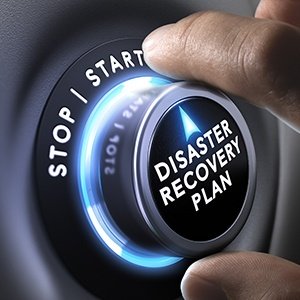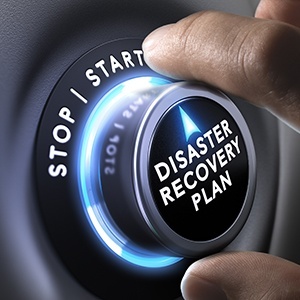
How Does Business Continuity Work With VoIP?
Business continuity and disaster recovery have been hot-button issues for years, but primarily around data. Companies have long incorporated disaster recovery programs and processes for their servers and PC’s, but few had incorporated voice as part of their disaster recovery planning.
 The primary reason voice fell to the wayside when it came to disaster planning was due to the fact that phone numbers were owned and managed by the phone company. The phone number was attached to the line itself and mobility simply wasn’t an option. The best a business could do was request a forward for each phone number to an external number. In the case of a large business with many extensions and phone numbers, it was a clunky and inefficient process at best.
The primary reason voice fell to the wayside when it came to disaster planning was due to the fact that phone numbers were owned and managed by the phone company. The phone number was attached to the line itself and mobility simply wasn’t an option. The best a business could do was request a forward for each phone number to an external number. In the case of a large business with many extensions and phone numbers, it was a clunky and inefficient process at best.
Benefit of VoIP
VoIP (Voice over IP) and SIP (Session Initiated Protocol) service offers companies the opportunity to create disaster recovery (DR) plans for voice the same way they would for their data.
Businesses utilizing IP or hosted systems with SIP have all of their DIDs (Direct Inward Dial, or phone numbers inbound to their business) consolidated on a server in much the same way DNS servers house and manage domains for the internet. Because of this, managing call routing becomes not only easier, but also instantaneously.
Common Scenario:
Business X uses an in-house IP phone system with SIP to a VoIP provider like N2Net. The VoIP provider builds hosted PBX installation which mirrors the local system. The auto-attendant greeting is uploaded from Business X’s existing phone system and the extension structure is created. Often cell phones are programmed in as the emergency extension.
When the local system at Business X fails, the VoIP provider automatically and transparently fails over to the mirrored hosted PBX. Calls keep flowing to the extensions, cell phones and voicemail even though the local system is offline. As soon as the local system becomes available, normal call routing resumes.
Often times, in a mirrored/DR hosted PBX installation, the business modifies the caller’s options and limits the number of extensions available to the client. For example, when in disaster recovery mode a caller might hear, “Thank you for calling X company. Please dial 1 for sales, 2 for support, 3 for accounting, etc.” When selected, these limited options might forward to an external cell number, voicemail account, or forward offsite to another office.
Business Continuity/Disaster Recovery Essentials
Disaster recovery for voice is dependent on a few things being in place prior to the occurrence of a disaster:
- The business must be utilizing a SIP carrier/provider for their telephone service. This ensures the transparent failover as the logic has already been programmed in the provider’s soft switch.
- The failover option (Hosted PBX, secondary SIP trunk, forward to external number) must be selected and programmed ahead of the disaster.
- The DR system should be tried/tested/corrected ahead of the actual need. This ensures that in the event of a disaster the failover plan will work seamlessly without issue.
Work With Voice DR Specialists
Not all SIP carriers are equipped to handle and manage disaster recovery for voice options. Work with a provider who knows how to plan, architect, and manage DR for voice.
N2Net is a voice DR specialist and can answer questions about disaster recovery options for your organization. Contact an N2Net sales professional today for answers to your VoIP and disaster recovery related questions.
Download our guide to disaster recovery to ensure you’ve considered and completed every aspect involved in creating a disaster recovery plan.
